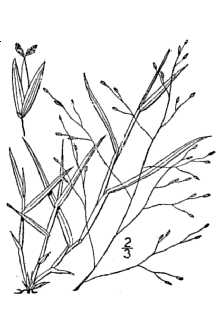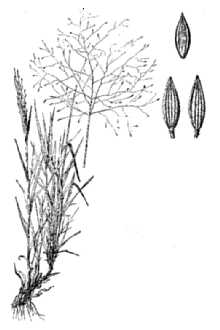Leptoloma cognatum (Schult.) Chase
Scientific Name: Leptoloma cognatum (Schult.) Chase

| General Information | |
|---|---|
| Usda Symbol | LECO |
| Group | Monocot |
| Life Cycle | Perennial |
| Growth Habits | Graminoid |
| Native Locations | LECO |
Plant Guide
Use soil moisture sensors to measure the soil moisture of Leptoloma cognatum (Schult.) Chase.
Fact Sheet
Alternate Names
fall witchgrass, Leptoloma cognatum
Uses
Carolina crabgrass is grazed by all domestic livestock and by deer and antelope, Use soil moisture sensors to measure the soil moisture of Leptoloma cognatum (Schult.) Chase., Upland game birds eat the seed,
Status
Please consult the PLANTS Web site and your State Department of Natural Resources for this plant’s current status, such as, state noxious status and wetland indicator values.
Description
Grass Family (Poaceae). Carolina crabgrass is a native, warm-season, short-lived, perennial bunch grass. The height ranges from 1 to 2 feet. The leaf blade is narrow, generally less than 4 inches long, one side wavy, and the other smooth. The leaf sheath is rounded and shorter than the internodes. The stem is knotty and hairy at the base. The seedhead has an open purplish panicle one-third to one-half as tall as the plant. The panicle branches are hairy in the axils and the spikelets are 1-flowered and solitary at the end of a long pedicel. Distribution: For current distribution, please consult the Plant Profile page for this species on the PLANTS Web site.
Management
Proper use and management of associated grasses maintains this grass in the plant community.
Establishment
Carolina crabgrass growth starts in the spring. The seedheads are produced a month later with the foliage remaining green for 2 to 3 weeks longer. When climate is favorable, it makes some fall growth. Seed remain on the plant until winter. This plant is shallow rooted. Individual plants are usually widely scattered in any plant community. It grows best on sandy loams with heavier subsoil. Cultivars, Improved and Selected Materials (and area of origin) Please contact your local NRCS Field Office.

